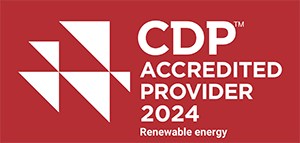1. Three columns of text with green background
Impact
We offer the highest-quality green energy to help you maximize your carbon reductions.
Trust
We provide transparent, reliable reporting and support for your sustainability communications.
Flexibility
We simplify green energy to help any business or individual find their renewable energy solution.
Large header with image background
1. Testimonials card pull without pagination
Sorry, we couldn't find any posts. Please try a different search.
1. Impact stats card pull
2+ million
tonnes of CO2e emissions displaced
1,500+
bullfrogpowered businesses
10,000+
bullfrogpowered homes
1. Testimonials card pull
“
Test
”

“
Avec Bullfrog, le CDP peut désormais compter sur un collaborateur exclusivement axé sur le marché canadien, qui propose une solution d’énergie renouvelable aux entreprises désireuses de réduire leur impact environnemental et de soutenir le développement de nouveaux projets d’énergie renouvelable.
”
CDP

“
Bullfrog Power provided excellent support to Shopify as we identified and selected a high impact renewable energy project for our first PPA. Bullfrog Power’s subject-matter expertise and offerings continue to enable Shopify to meet our renewable energy commitments, and support our broader mission of reversing climate change.
”
Stacy Kauk, Director of Shopify’s Sustainability Fund
1. Solutions card pull

Électricité verte
650 kWh d’énergie propre, renouvelable par mois
16,25 $ par mois
Avec ce produit, vous remplacerez 1,2 tonne de CO2 par année. Cela revient à éviter la combustion de 601 kg de charbon!

Électricité verte
850 kWh d’énergie propre renouvelable par mois
21,25 $ par mois
Avec ce produit, vous remplacerez 1,6 tonne de CO2 par année. Cela revient à éviter la combustion de 802 kg de charbon!

Électricité verte
450 kWh d’énergie propre renouvelable par mois
11,25 $ par mois
Avec ce produit, vous remplacerez 0,9 tonne de CO2 par année. Cela revient à éviter la combustion de 450 kg de charbon!
1. Green champions card pull
Judith Roux
“Taking action for the planet—keeping our waters clean, our forests green, our air breathable—is the only action on the table.”
Kim Horrocks (and others!)
“I especially hope that the younger generation sees that when everyone gets together for the environment, change can happen.”
Les Quinton
“I’m trying to make changes in my life that will ensure my grandchildren can enjoy life as I have.”
1. Community projects card pull
Lutsel K’e Dene First Nation
When the Lutsel K’e Dene First Nation (LKDFN) launched its 35 kW solar project, the community became the first independent power producer in Canada’s northern territories.
Vancouver Cohousing‘s Community Solar Project
Bullfrog Power helped celebrate the launch of SolShare Energy’s 23 kW rooftop array—the first co-operatively owned community solar project in B.C…
1. Sources card pull
Palm Beach SWA Processing Facility
Through this project, landfill gas is captured, cleaned, and repurposed to dry the biosolids, and the resulting fertilizer is used by agricultural, commercial, and residential applications across the Sunshine State.
Biodiesel Las Americas LLC
Bullfrog Power’s green fuel is a renewable alternative to petroleum-based transportation fuel. We source our green fuel from Biodiesel Las Americas LLC (“BDLA”), a biodiesel producer in Doral, Florida, that repurposes used cooking oil, a waste stream collected from restaurants, commercial kitchens, and food processing plants.








